What is Storytelling in the Conflict Minerals Case: An Antenarrative Analysis
David M. Boje June 2, 2014
Storytelling is defined here a combination and interplay of many kinds of narratives, living stories, and their antenarrative relationships? To me, Walter Benjamin (1937) still has the best essay ever written on storytelling. Benjamin declares that storytelling is coming to an end because people in organizations are no longer getting time to practice storytelling competencies, not jsut telling, but listening to what is between-the-lines. Storytelling has become displaced by beginning-middle-end (BME), way-too-simplistic BME grand narratives told by media, politicians, and economists. And organization-storytelling is still very pragmatic (Boje, 2014) but struggling to be more than ad-verts, slogans, 'just do it.'
What is Antenarrative?
Antenarratives are narratives not yet told, and interacting in moving-fragments with living stories as yet unstoried. Antenarratives are what comes BEFORE narratives cohere, and a BET on the future possibilities of your living stories and narratives (Boje, 2001, 2008a, 2011, 2014a, b). Antenarratives interconnect narratives and living stories with BEFORE and BET. There is a concise article about antenarratives by Roy H. Williams (June 2nd, 2014 More):
"Dean Rotbart says you are three different people.
The first of the three is the person you see when you look in the mirror;
the person you believe yourself to be.
The second is the person other people see when they look at you;
the person they believe you to be.
The third is the real you."Know something, sugar? Stories only happen to people who can tell them." - Allan Gurganus
Gurganus is right. The truth happens to everyone, but stories only happen to people who can tell them.
Professor Sexton recently told me about a new definition of reality known as the antenarrative: Ante: prior to, Narrative: the story.
It reminds me of that third person spoken of by Rotbart.
The antenarrative is the story that no one can tell. Not even the people who were there. It is chaotic, without logic and disconnected. It is the way things actually happen. "
The MondayMorningMemo for June 2, 2014 - hear full program by Dean Rotbart
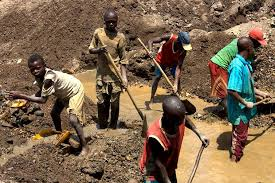
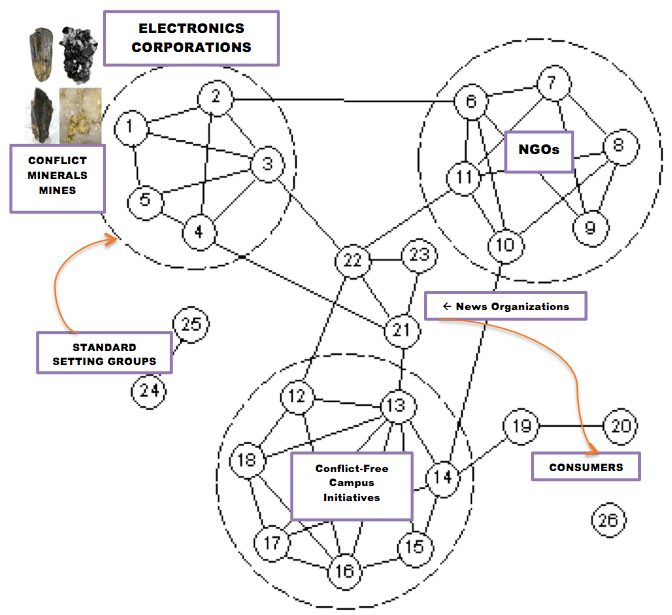
Figure 1 - Story Network Analysis (Conflict Minerals Example) CLICK ON LINKS IN ABOVE IMAGES TO GO TO SAMPLE OF THE STORYTELLNG HAPPENING
The lines connecting nodes in the figure represent antenarrative relations between organizaitons, consumers, and the materialisms of the minerals themselves. In an ontological/ontic analysis, the 'new materialism' includes the ways the minerals are part of the discourses (storytelling) that ensues in the struggles to set standards in the conflict-minerals supply chain.
Here is a recent academic articles by Rosile et. al (2013) on antenarratives.

Figure 2 - Anenarratives connect Living Story to Narrativist (grand narratives) (source, Boje, 2014a illustration).
Antenarratives are the double-headed arrows of connections between the Storytelling Diamond paradigms and COPE (Boje, 2014a): "COPE is defined here as interplay of four main alternatives to ‘whatever works’ pragmatist storytelling, and that can inform management and organization theory, praxis, and method."
- Critical Pragmatic Storytelling -------------> C
- Ontologic Pragmatic Storytelling -----------> O
- Post-positivist Pragmatic Storytelling ------> P
- Epistemic Pragmatic Storytelling -----------> E
We can relate these to the Storytelling Diamond:
- Narrativist - Rooted in deeper structures of poetics, linguistics, structuralism, and (Russian) formalism. It assumes that the researcher is outside observer, and that anything material is a social construction. Relates to E in COPE (epistemic-pragmatism).
- Living Story – Situated in the present where future and past are colliding. Focused is on lived experiences observed from individual’s life world. Relates to O in COPE (ontological pragmatism).
- Abstractionist – Analyzes BME narratives and living stories by reducing them empirically (post-positivistically) to abstract elements, semiotic patterns (words or phrases). Relates to P in COPE (post-positivist pragmatism).
- Interpretivist – Deconstructs BME narrative structures in order to find deeper power and hegemony patterns that can be resituated (reconstructed). Does not abide materialist framing. Relates somewhat to C in COPE (critical pragmatism).
- Materialist – Includes Marxist historical materialism and more recent work on ‘material storytelling’ (Strand, 2012), based in Barad’s (2007) intra-activity of discourse (interpretivist) with discourse, that of Fred Alan Wolf (1981, 1991, 2001, 2011) storytelling and materiality, and my own work on ‘quantum storytelling’ looking at materiality and storytelling as energy, momentum, inertia in a ‘Storytelling Field’ concept. It is a connection of P and O in COPE (post-positivist in a post-Newtonian sense, and ontological in a quantum sense)[See Boje, 2014a for these references].
- Practice – Includes restorying (Rosile & Boje, 2002) in ontological approaches, Appreciative Inquiry (Cooperrider & Srivastra, 1984, 1987) as exemplary of episteme or social constructivist approaches, as well as more sociological critical practice (Foucault, 1979) and critical pragmatism of Dewey (1929) or Habermas (1996). Practice can extend to each COPE pragmatism.
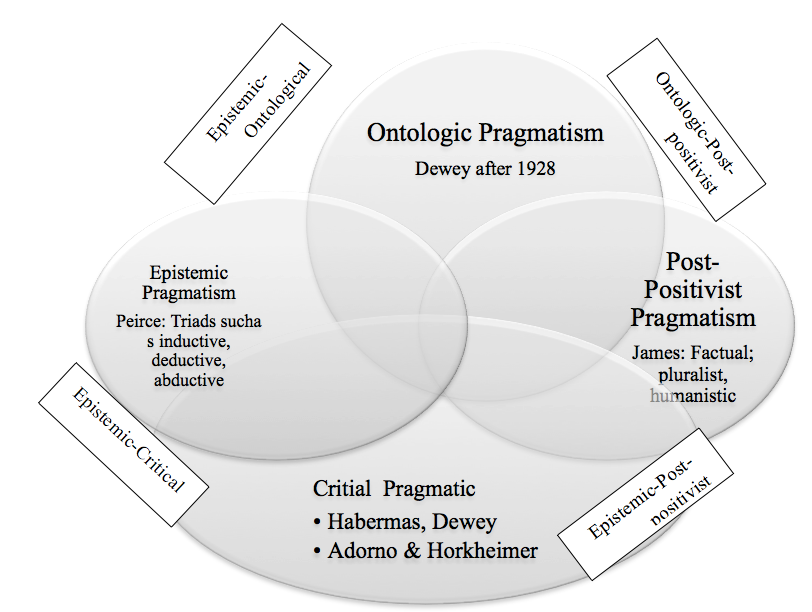
Figure 3 - COPE-Pragmatist Inquiry Research Methods (from Boje, 2014a)
For more on antenarrative click here for Boje's essay or see
What are Grand Narratives
Grand Narratives are constructive retrospectively (backward-looking). One kind of narrative is the Grand Narrative (Lyotard, 1979). These are usually sociological, political, economic, and/or historical (historicity) narratives that gather select events, characters, and theme into a 'monological' plot. As Bakhtin put it, such narratives are always monological. Factual narratives are factual, perhaps intellectual, but not necessarily convincing.
What are Living Stories
There are many kinds of living stories. I take an indigenous definition. Living Stories are defined ontologically, whereas most grand narratives are an epistemic schemata, or an empiral narratives in the post-positivist sense. There are many ontologies: pre-Socratic (such as theose philosophers who took the elements of fire, water, earth, and air seriously); Socratic (debates of Aristotle, Plato); Descartes duality of subject from object; Heisenberg's quantum physics (which I take to be ontologic, but others disagree); Johny Dewey's American Pragmatism (1929) conversion to ontology after reading Heisenberg (1927) leaving Jame's (1907) postivisim-epistemic combination; Bohr's complimentarity version of quantum which Karen Barad (2003, 2007) picks up on in her epistemic-ontological approach she terms 'agential realism' (the intra-activity of materiality with discourse); Heidegger's Being-in-the-World with Dasein (Being-in space, in time, in equipmentality, in Nature, in welfare, & in various Other realms); Hannah Arendt's (1957) Human Condition that critiqued Heidegger for leaving out the politics of action, being too focused on labor/work and equipment-things, and being an irresponsible politicial dupe; Merleau-Ponty's (1962) revision to Heidegger which looked to experiential consciousness as in-space, in-time, and so on as behind epistemic, ontico, and ontological; and Deleuze's (with Guattari, 1987) ontology of rhizomatics of space, time, and movement. In short there are many ontologies. There are others.
The living stories swim in the ontologies. The indigenous ones are for me quite important. For example, for Kaylynn TwoTrees, living stories have a place, a time, and a 'mind' (an aliveness of their own, which I see as one of the new ontologic-materialisms). By new materialism, I mean a material-survivance of a community, its land-use, its ways of Being-in-the-landscape, in-Nature, where all of Nature is alivness spiritually (the rocks, the rivers, the mountains, the planet is alive & spirited).
Storytelling has many important philosophical roots.
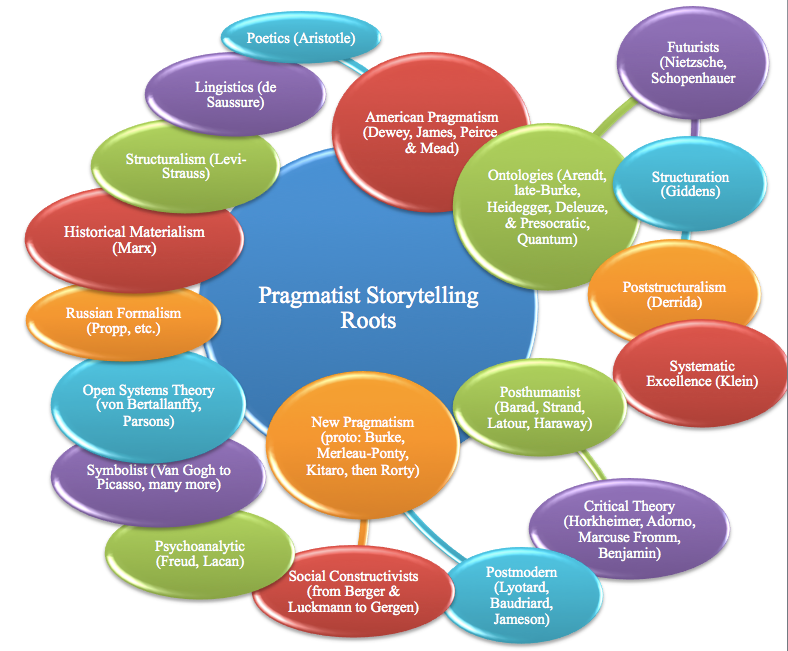
Figure 4 - Philosophical Roots of Storytelling (adapted from Boje, 2014a)
Examples of Conflict Minerals Storytelling
One of the current examples is the struggle to end the genocide embedded in the mining of conflict minerals.
Mike Ramsdell's YouTube has a model of intellectual plus emotional story told in succession to motivate audience action. The intellectual story of the grand narrative of intellectual facts and connections is not enough to motivate action. But coupled with a human living story of one person that we see, hear, and face their pain, we get an emotiona human connection. Interrconnecting all this are the swarms of antenarratives behind the grand narratives inteplaying with the tragic living stories of the conflict mineral miners.
This one is what I call an antenarrative of modern day slavery, as depicted by humanitarian photographer Lisa Kristine, who specializes in images of remote indigenous peoples.
Intel is changing the standards and norms of supply chain practices in obtaining non-conflict minerals, thus reducing the violence, and bringing about the antenarrative possibilities, a bet on the future of sustainable peace, and an end to slavery and violence in the Congo (it could happen if all the electronics users of these minerals implement chain of custody supply chain processes).
In the appendix is an pragmaic-empiric-narrative of the rankings of these electronic companies (60 = best practices, and 0 = worst) [source of these rankings].
There are several kinds of storytelling analyses that can be done on the conflict-mineral supply chain case.
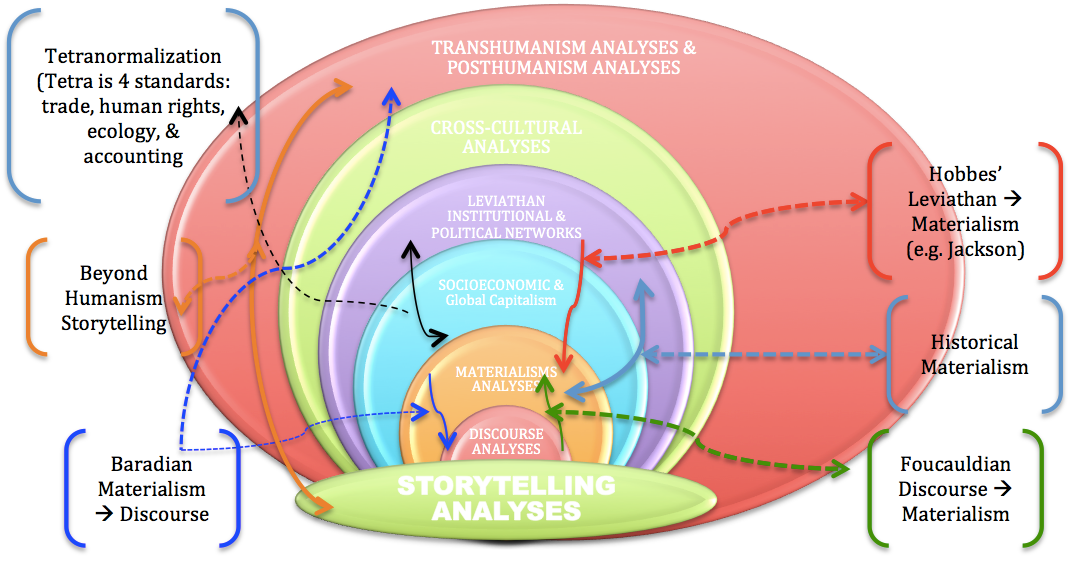
Figure 5 - Several Storytelling Analyses Possible with this Case
There are several pragmatic storytelling analyses that could be used for this case. Each connects differently to storytelling.
Tetranormalization Analysis (black arrows) would assess standard-setting by various global institutions attempting to control the supply chain chain of custody to insure non-conflict minerals. Tetra means four, and tetranormalization is four kinds of standards (trade, human rights, ecology, & accounting). The trade standards are in the new legislation (Dodd-Frank Act Section 1502). The Human Rights standards are being set by several NGOs. "Two basic proposals were made. One, from NGOs like the Enough Project and Global Witness, was that all companies that could potentially use such conflict minerals, or metals derived from them, should check all the way through their supply chains, right down to the very bottom through every layer of the global market, and then declare whether they were using conflict minerals or not. This is what made it into law (PDF) as a part of Dodd Frank" (source). The ecology standards of Green CSR :Profits from the trading of minerals mined in the Democratic Republic of Congo and its neighboring nations have been used to finance armed rebel groups, allowing them to continue fighting and encouraging ongoing inhuman acts, such as violence, plunder, abuse, human trafficking, and child labor. For this reason, such minerals are called “conflict minerals” and include tin, tantalum, tungsten, and gold" (source). Finally, in terms of acocunting issues, The Journal of Accountancy says, "To get an idea of how complex and far-reaching the new “conflict minerals” rule is likely to be for manufacturers, consider Hewlett-Packard. HP estimates that about 1,000 suppliers in its chain ultimately provide a product to HP that may contain one of the conflict minerals, said Jay Celorie, who coordinates HP’s conflict minerals compliance. And suppliers will be asked to do their part in the due-diligence process required by the new rule" (source).
Beyond Humanism Storytelling In the above figure, a possible analysis is to look at the posthumanism and transhumanism implications (Posthumanist Ontology paper). Several kinds of posthumanist analyses are possible. For example, in a Bardian Materialism --> Discourse, the focus is on how materialisms are intra-active with discourse. Barad contends that Foucauldian analysis is Discourse ---> Materialsm, meaning that discourses drive materaialisms. For Barad, it is the revers, the materialisms, in this case, the physics of 'conflict minerals' are 'agential' to the discourses (see Barad, 2003: 810-811): “Agential realism is an account of technoscientific and other practices that takes feminist, antiracist, poststructuralist, queer, Marxist, science studies, and scientific insights seriously, building specifically on important insights form Niels Bohr, Judith Butler, Michel Foucault, Donna Haraway, Vicki Kirby, Joseph Rouse, and others” Barad proposes a postuhumanist reworking of performative by applying Haraway’s concept of diffraction, reworking it for its materialization-agency in relation to discursive practices that affect performance. In this case, a posthumanist understanding of 'conflict minerals' addresses the ways that science studies minerals, how the technological practices of mining and supply chain discursively treat minerals, and so forth. Barad acknowledges the role of the human body in relation to the materialism of the minerals, the extraction practices, the violence to the body of the rebel militia mafia tacts, in relation to the performance of the supply chain, and even the discourse of consumption that drives the greed-chain. The agential realist ontology is an ac/counting (a storyteling of counting and accounts) of the human body (Barad, 2011). The quantum notion of ac/counting takes account and ethical accountability of what are the materializing forces of the calculations for conflict minerals, how the ways of calculating and accounting assign blame, or mask blame thereby making ‘agential cuts’ in the “entanglements of spacetimemattering (p. 46-47). This is alaos an example of quantum storytelling (Boje, 2014a), how storytelling is enacted in the quantuam age, from a posthumanist standpoint. Barad's challenge extends from Latour (Actor-Network-Theory) in going beyond a humanist social constructivism ac/counting, to understanding the new materialism implications.
Hobbes' Leviathan-Materialism - Another approach to the analysis would be Hobbes (1357) Leviathan. Leviathan is the embodiment of the institutions of a society. In the global situation of conflict minerals, a network of institutions are either evading standards, setting, standards, claiming standards they are not enforcing, trusting standards are working, and so forth. Hobbes beleived that laws could be set in place to improve such situations. Diana Coole develops a materialism storytelling of Merleau-Ponty, which can be extended in to embodied kinds of organizational storytelling and a critique of disembodied approaches in the Global Age. Matter in Western culture has been viewed as “devoid of agency” a mere collection of things instead of a “lively materiality” that is “self-transformative: and already “saturated with the agentic capacities and existential significance that are typically found in a separate, ideal, and subjectivist, realm”(Coole, 2010: 92). It is Samantha Frost (2010) who develops a new materialism reading of Thomas Hobbes’ (1651) Leviathan. Deborah Cook (2006) develops the materialism storytelling she reads in Theodor Adorno¹s work (with Horkheimer) on what is known in sociology and economics as the Culture Industry. Cook (2006) also has challenging ways social constructivists leave out the body, the materiality of bodies, consumerist understanding of bodies, the agency of bodies. Such an analysis would trace the impact of consumerism storytelling on the conflict minerals supply chain practices, such as how and why Intel and others are changing their practices not just due to the lwa changes (Dodd-Frank act) but from consumer group pressure, and from campus groups forming to ask universities to change their purchasing practices.
Historical Materialism - Another kind of storyteling analysis would take a more Marxist (post-Marxist) approch and address the specific material conditions that stem from the Leviathan (Frost, 2010; Hobbes, 1651) kinds of institutional arrangements. This might for example trace the surplus value calcualtions, the ways in which the drive for createing surplus value has become a war of all against all in the Congo.
There are many other kinds of analyses that can be performed. Here I have highlighted the kinds of 'new materialism' approaches that intraact with various modes of storytelling of conflict minerals.
In Boje (2014a) I develop seven kinds of materialism approaches, that I theorize are dialogical to one another.

Figure 6 - Seven Materialst Rhetorics (source Boje, 2014a).
Materiality Storytelling has at least seven competing rhetorics trying to persuade us.
- Representationalist (a kind of social constructivist & humanist perspective)
- Marxist Historical Materialist (assessment of material conditions & suprplus value chains)
- Foucauldian Postmodernist (discourses --> materialism)
- Barad/Strand Constitutive Materialist based on Neils Bohr approach to materialism
- Postmodern Althusserian Aleatory (subterranean or underground aspects, such as the hidden nature of the mining, the way women's bodies are abused, the violence of the mavia-militia, etc.)
- Bakhtinian Dialogical Materiality (ethical answerability for the conditions)
- Liquid/Quantum Materialist (Zygmunt Bauman's Liquid Modernity, & Boje's Storytelling in Quantum Age based on Heisenboerg Observer Effect & Uncertainty Principle).
In Boje (2014a) I develop a pragmatist storytelling approach to quantum rhetoric, one that traces aspects of ontological materialist rhetoric in Heisenberg. This has led to my mentoring a number of dissertations that developed ‘quantum storytelling ontology’ and more pragmatist quantum rhetoric. Logan (2012: 76) describes quantum rhetoric rather strangely as:
"… just as the measurement of sub-atomic particles changes their behavior and requires a quantum mechanic representation that includes the Heisenberg Uncertainty principle, something similar is required for a science of the subjective—something I would call quantum rhetoric. What is the study of communications and media ecology after all but the study of how one set of subjective humans communicates with another set of subjective humans."
Aleatory materialism (Althusser) looks at how the pathways fo conflict minerals are already0constituted, and the materials rhetoric privileges ways of keeping the impact of conflict mineral production, consumption, and distribution practices hidden, and yet the miners, the women and children experiencing the violence, the genocide, the horror have an embodied experience of the supply chain. The storytelling observations about the opportunties for a global supply chain for conflict-free minerals can change the performance practices of major corporations by bringing consumers into closer contact with the living stories of the victims of conflict mineral practices.
Postinstrumentum Film by Urmas Lüüs (Estonia) - In postinstrumentum there is an antenarrative process that is before storyability, and before grand narrative constructivism. In Urmas Lüüs' (2013: 188) postinstrumentum is a blacksmith artist storytelling that is a door to music, as the theatre for his performance art, fills with sound and light/shadow/darkness rhythms. He captures the shamanic side of blacksmith art in the quantum age: "According to shamans among the local Bushmen, as they enter a trance, a fine glowing rope drops down and they climb up it to travel around the spirit world" (IBID.: p. 190). I attended Lüüs' (2014) stage performance June 1st in Estonia. In one scene he is supended from a small cable attached to the ceiling. As he trirls around, he used two metal rods with metal strings to make an instrumentum music, as we glimpse the spirit world of animals, humans inter-act with the sound of iron. He tunes the instrument, its rhythms, using his metal bows. In another scene cockroaches (see film about 20 minutes in) scurry about in response to the iron-music, to the reverberations in the synthesizers he has constructed from everyday electronic gadgets (a drill, some speakers from a computer) along with vibrating iron in every direction.
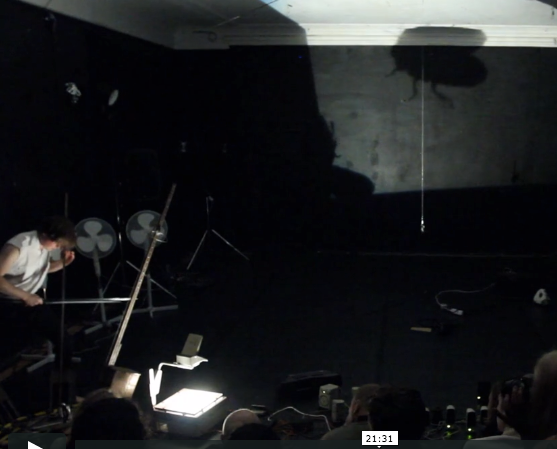
Figure 6 - Postinstrumentum Performance of Blacksmith Art (scene 21:31)
The audience is transported into a posthumanist condition, where not only the humans are audience, the the cockroaches dance to the musical iron rhythms. The antenarrative process extends agentially from the iron and steel minerals, and from the conflict minerals making up the computers, lap tops, cell phone, and so forth that are part of the theatric performance. At one point he rings a cell phone planted into the bleachers where the audience sits. And the sound of the cell phone rings becomes embedded and entangled with the embodied performaces on the stage, cockroaches, human, and electronic rhythms meld and fuse together. The scene oscillates between humanism, posthumanism, and transhuman. We are all cyborg, as the virtual storytellingdescends on us, engulfs and envelops us, like the fog that extends from his machinery, as the theatric performance comes to a close. We are left to ponder the ways our technologies are intrumentum, rhythmic, quantum, and musical in ways that intra-act with the mineral world. And these cyber technologies we all take for granted are complicit in the global capitialism practices of conflict and conflict-free minerals.
The storytelling can hide the conflict mineral grlobal practices, or bring the antenarratives process into relief where living stories of the miners, the women abused, the genocide take center stage. In the BME narratives, the mineral practices remain hidden, and its too easy for consumers to dismiss thier own complicity in this supply chain.
APPENDIX: The Electronics Company Rankings for Control of Conflict-Mineral Supply Chain
The antenarrative processes lie behind the grander narratives, and the yet untold living stories of the miners and the abuses to women and children by the perps.
References
Barad, Karen. "Posthumanist performativity: Toward an understanding of how matter comes to matter." Signs 28.3 (2003): 801-831.
Barad, Karen. (2011). "Nature's queer performativity." Qui Parle: Critical Humanities and Social Sciences 19.2: 121-158.
Boje, D. M. (2001). Narrative Methods for Organizational and Communication Research. London: Sage. Where 'antenarrative' concept first used and defined.
Boje, D. M. (2014a) Storytelling in Organizaitons: Managing in the Quantum Age. London: Routledge. Has glossary of terms, and covers COPE in American and European Pragmatism and proto-pragmatism of Heidegger, as well as Merleau-Ponty, et. al.
Boje, David M. (Boje, 2014b). Six Dumb Cultural Habits of Storytelling about War, Veterans, Schooling, and Sustainability. http://peaceaware.com/Warwick/Six Dumb Cultural Habits of Storytelling about War-sv2.pdf
Boje, David M., and Rohny Saylors. (2014). "An Ontological Perspective on Process." Pp. 197-218 in François Cooren, Eero Vaara, Ann Langley, Haridimos Tsouka (Eds.)Language and Communication at Work: Discourse, Narrativity, and Organizing. London: Oxford University Press.
Cook, Deborah. (2006). "Adorno’s critical materialism." Philosophy & social criticism 32.6: 719-737.
Coole, Diana. (2010). “The inertia of matter and the generativity of flesh.” Pp. 92-115 in Diana Coole and Samantha Frost (Eds.) New materialisms: Ontology, agency, and politics. Duke University Press.
Frost, Samantha. (2010). Fear and the illusion of autonomy. Pp. 158-176 in Diana Coole and Samantha Frost (Eds.) New materialisms: Ontology, agency, and politics. Duke University Press.
Logan, R. K. (2012). What Is Information?: Why Is It Relativistic and What Is Its Relationship to Materiality, Meaning and Organization. Information, Vol. 3(1), 68-91. http://www.mdpi.com/2078-2489/3/1/68/htm
Lüüs, Urmas (2014). Film performance of postinstrumentum. See earlier Vimeo production https://vimeo.com/97006147
Lüüs, Urmas (2013). Pp. 186-195 in Kadri Malk (ed) Raust On Iron. Tallinn, EstoniaL Eesti Kunstiakadeemia. ISBN 978-9949-467-41-9
Hobbes, Thomas. (1651). Leviathan; Frost, Samantha. (2010). Fear and the illusion of autonomy. Pp. 158-176 in Diana Coole and Samantha Frost (Eds.) New materialisms: Ontology, agency, and politics. Duke University Press.
Rosile, G. A.; Bøje, D. M.; Carlon, D.; Downs, A.; Saylors, R. (2013). Storytelling Diamond: An Antenarrative Integration of the Six Facets of Storytelling in Organization Research Design.Organizational Research Methods (ORM) Journal, Volume 16 Issue 4 October 2013 pp. 557 - 580. Accepted Feb 14 2013. Click here for pre press pdf
Strand, Anete Mikkala Camille. (2012). The Between: ON Dis/continuous intra-active Becoming of/through an Apparatus of Material Storytelling. Unpublished Doctoral Dissertation, Aalborg University, Denmark.























